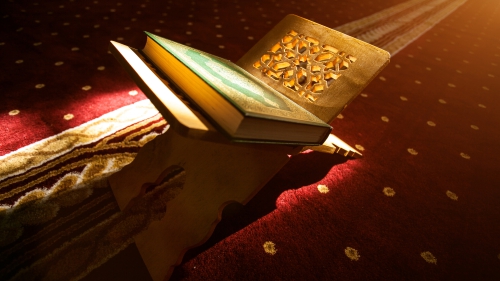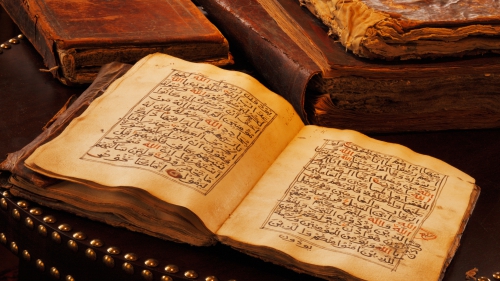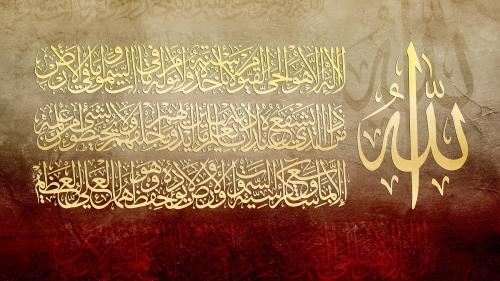The Quran as Recitation
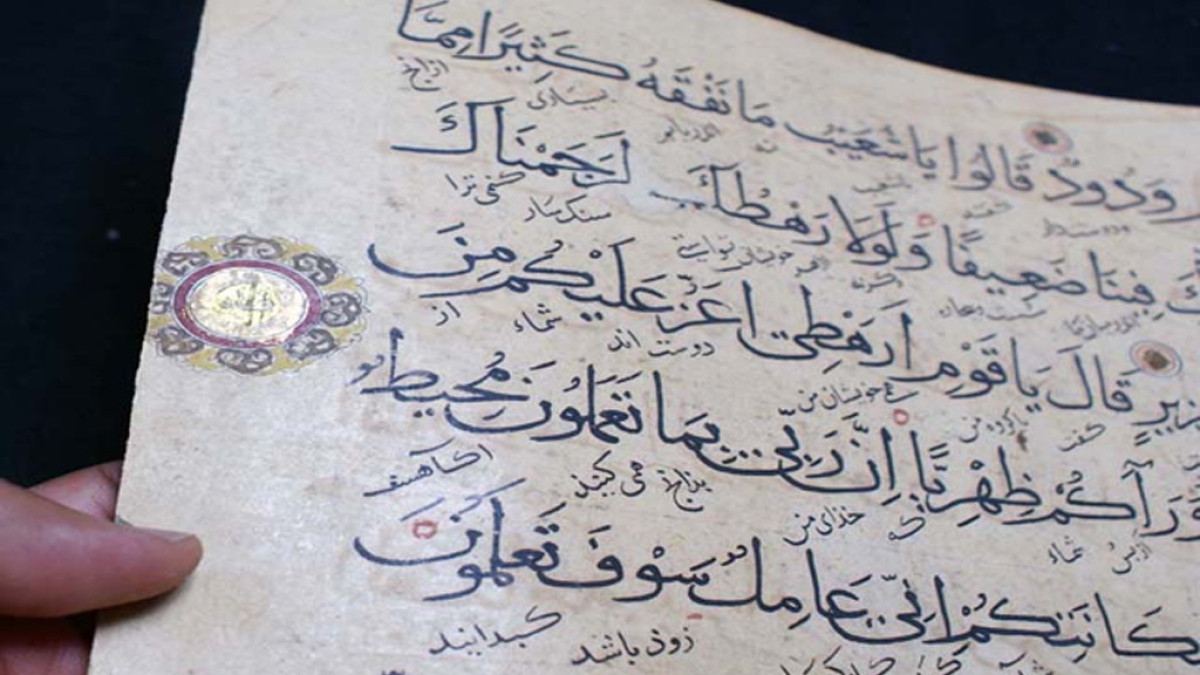
What was the spirit of those early Meccan verses that became central to the Qur'anic tradition? When the reader unfamiliar with Islam and unversed in Arabic picks up the standard English translation of the Qur'an, that spirit can be hard to find. What the person who learns the Qur'an in Arabic experiences as a work of consummate power and beauty, outsiders can find difficult to grasp, confusing, and in most English translations, alienating. The written Qur'an does not seem to have a clear beginning, middle, and end. It shifts thematic registers: from mystical passages to sacred history, from law to the struggles of Muhammad and his followers with little or no warning. Many of its chapters mix themes that sometimes begin in mid-topic. The Suras are arranged in what can seem a chronologically and topically arbitrary manner, with the longest Suras at the beginning and the shortest at the end.
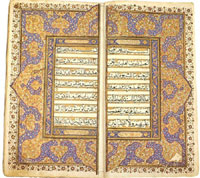 |
The experience of the Qur'an in traditional Islamic countries is very different from Western attempts to read it as a story bound within the pages of a book with a sequence of beginning, middle, and end. For Muslims, the Qur'an is first experienced in Arabic, even by those who are not native speakers of Arabic. In Qur'an schools, children memorize verses, then entire Suras. They begin with the Suras that are at the end of the Qur'an in its written form. These first revelations to Muhammad express vital existential themes in a language of great lyricism and beauty. As the students learn these Suras, they are not simply learning something by rote, but rather interiorizing the inner rhythms, sound patterns, and textual dynamics-taking it to heart in the deepest manner.
Gradually the student moves on to other sections of the Qur'an. Yet the pattern set by this early, oral encounter with the text is maintained throughout life. The Qur'anic experience is not the experience of reading a written text from beginning to end. Rather, the themes, stories, hymns, and laws of the Qur'an are woven through the life stages of the individual, the key moments of the community, and the sensual world of the town and village. Life is punctuated by the recitation of the Qur'an by trained reciters who speak from the minarets of mosques, on the radio, and from cassettes played by bus drivers, taxi drivers, and individuals. The experience is a nonlinear repetition through recitation. The actual stories, which may seem fragmented in a written version, are brought together in the mind of the hearer through repeated experiences with the text. The most accomplished Qur'anic reciters are famous throughout the Islamic world, and their cassettes and CDs can be found in kiosks and music stores in any city with a large Islamic population.
This Qur'anic experience is intertwined through Arabic literature and civilization and, in an extended fashion, through the arts and civilization of other non-Arab Islamic societies. Qur'anic calligraphy, the visual manifestation of the Qur'an, is the basis for Arabic calligraphy and one of the most distinctive features of Islamic architecture. Qur'anic inscriptions can be found on almost any major work of architecture, offering yet another form of remembrance (dhikr). Almost all of the major works of art in the Islamic world draw on Qur'anic allusions. To cite just one example, love poets consider the Qur'anic story of Moses, who was overwhelmed and nearly destroyed by his near vision of the deity, to be a model for the power and intensity of love. The subtlest allusion to Moses on Sinai is enough to conjure up the entire context.
Excerpted from "Approaching the Qur'an" by Michael Sells
Visit: IslamiCity's Quran Center











